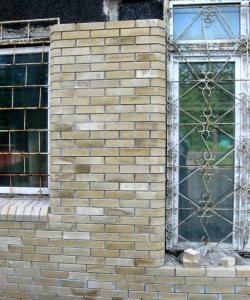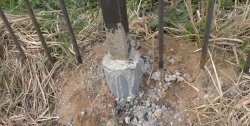Using a template when laying bricks
Without proper experience, bricklaying proceeds slowly, which is caused by the complexity of laying the fastening mortar. When smoothing it with a trowel, an uneven layer is obtained; as a result, the bricks lie crookedly, and their alignment along the cord takes a lot of time. All this can be avoided by using one of the template designs for laying walls. Particularly successful devices are devices with a hopper, which allow you to lay mortar for a whole row of bricks at once.
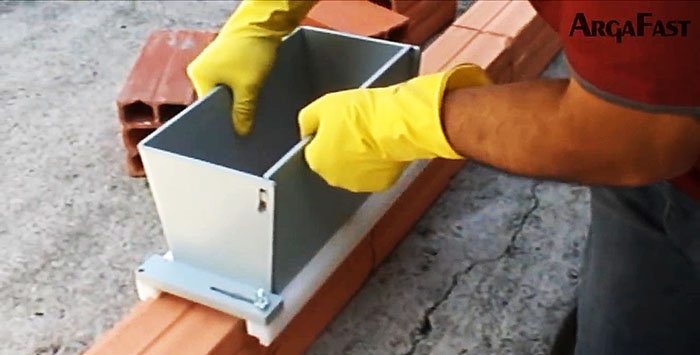
For masonry you will need:
The use of such devices of any design requires the presence of a first row. It will have to be laid using traditional technology. It must be perfectly even, so you need to use a stretched cord. If the foundation is sloping horizontally and it was not possible to level the masonry on the first row, then this can be done with a second line, and only after that go to the template.
It is most convenient to use an adjustable template, since it is universal for bricks of different configurations.First you need to set its width by moving the side wall with the stop runners.
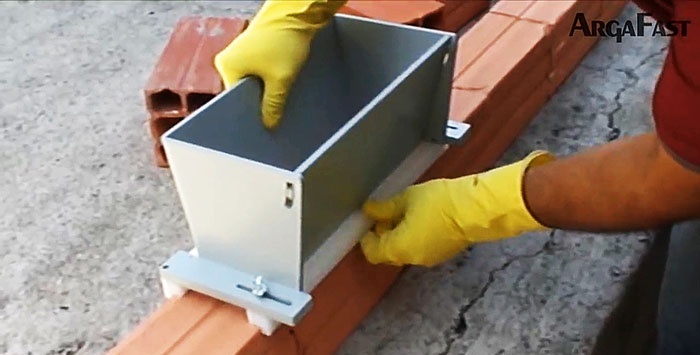
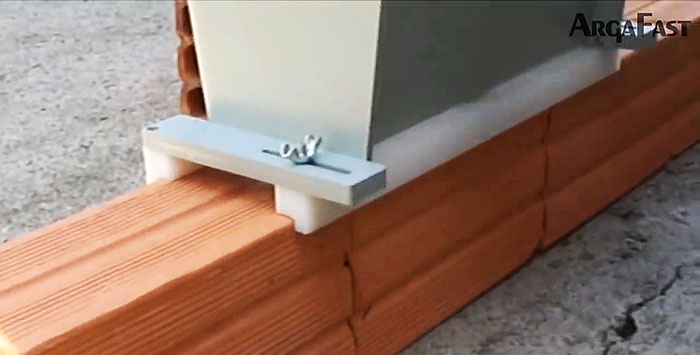
The template is installed at the beginning of the row and filled with solution.
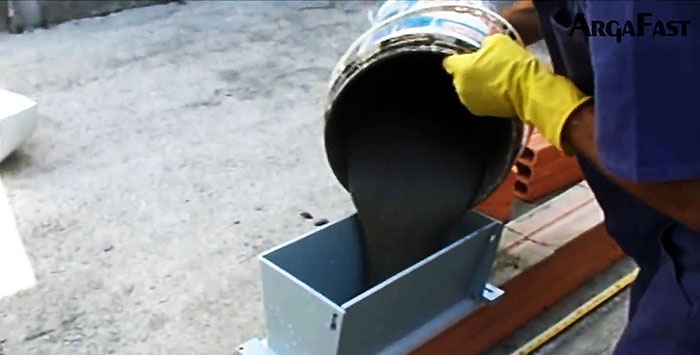
The consistency of the cement-sand mixture should be medium. When moving, the template leaves a thin, uniform layer of solution. There is no need to immediately go through the entire line of the wall if it is long, so that the mixture does not ventilate.
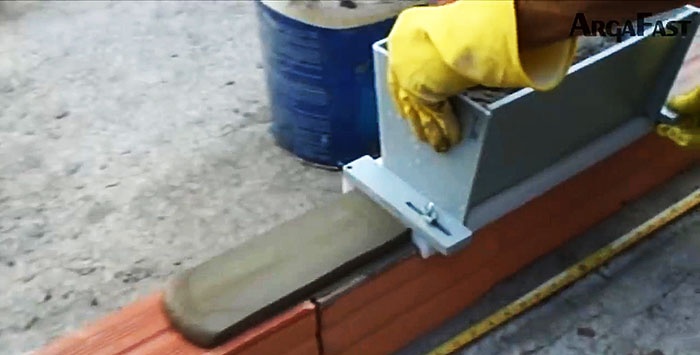
Laying bricks on such a flat pad is much easier and faster. It lays down with a standard shift step of half a brick. When laying, a small amount of mortar is squeezed out, which needs to be removed.

Depending on the brick configuration, it may be necessary to use an end template. It is applied to the brick end and a layer of mortar is laid over it. This is repeated for each brick, but only on one side.
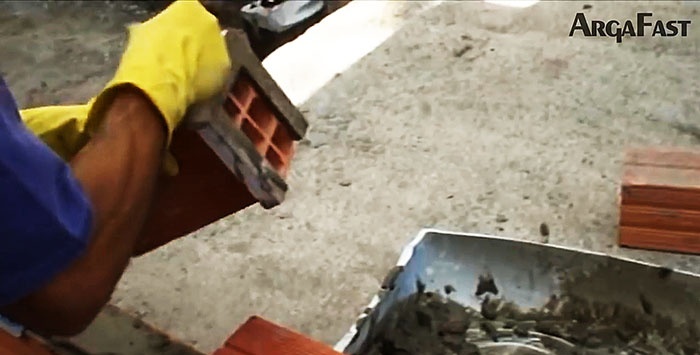

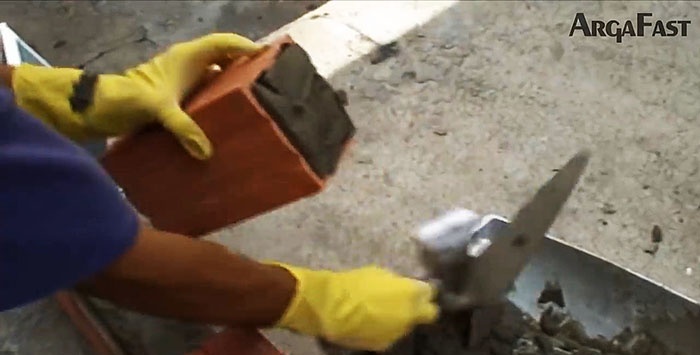
Although the mortar layer is uniform, during laying one or more bricks can be crushed in places, creating unevenness. For this reason, once every few rows you need to control the line with a string. If there are any errors, you should remove the template from the wall after using it so that it does not pull the thread. After this, the bricks must be laid, aligned along it. Where necessary, they are pressed harder or placed on an additional layer of mortar spread with a trowel.
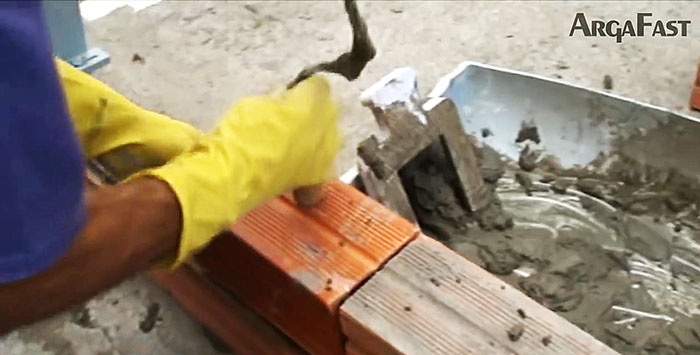
Using a template, you can work faster, avoid overuse of glue, its splashing and severe distortions in the rows. After the end of the shift, the tools must be washed.
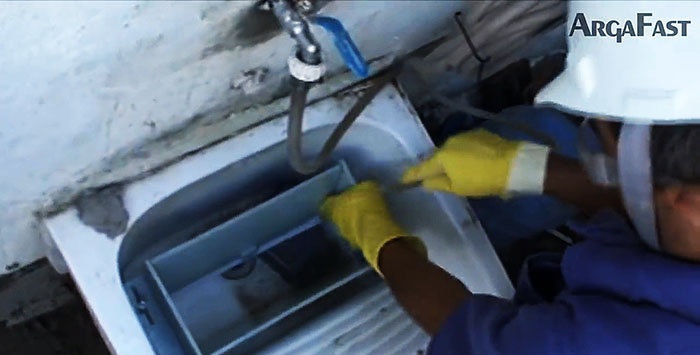

Required Tools
For masonry you will need:
- horizontal template;
- end template;
- trowel;
- bucket for carrying the solution;
- cord.
How to use the template
The use of such devices of any design requires the presence of a first row. It will have to be laid using traditional technology. It must be perfectly even, so you need to use a stretched cord. If the foundation is sloping horizontally and it was not possible to level the masonry on the first row, then this can be done with a second line, and only after that go to the template.
It is most convenient to use an adjustable template, since it is universal for bricks of different configurations.First you need to set its width by moving the side wall with the stop runners.


The template is installed at the beginning of the row and filled with solution.

The consistency of the cement-sand mixture should be medium. When moving, the template leaves a thin, uniform layer of solution. There is no need to immediately go through the entire line of the wall if it is long, so that the mixture does not ventilate.

Laying bricks on such a flat pad is much easier and faster. It lays down with a standard shift step of half a brick. When laying, a small amount of mortar is squeezed out, which needs to be removed.

Depending on the brick configuration, it may be necessary to use an end template. It is applied to the brick end and a layer of mortar is laid over it. This is repeated for each brick, but only on one side.



Although the mortar layer is uniform, during laying one or more bricks can be crushed in places, creating unevenness. For this reason, once every few rows you need to control the line with a string. If there are any errors, you should remove the template from the wall after using it so that it does not pull the thread. After this, the bricks must be laid, aligned along it. Where necessary, they are pressed harder or placed on an additional layer of mortar spread with a trowel.

Using a template, you can work faster, avoid overuse of glue, its splashing and severe distortions in the rows. After the end of the shift, the tools must be washed.

Watch the video
Similar master classes
Particularly interesting
Comments (0)


